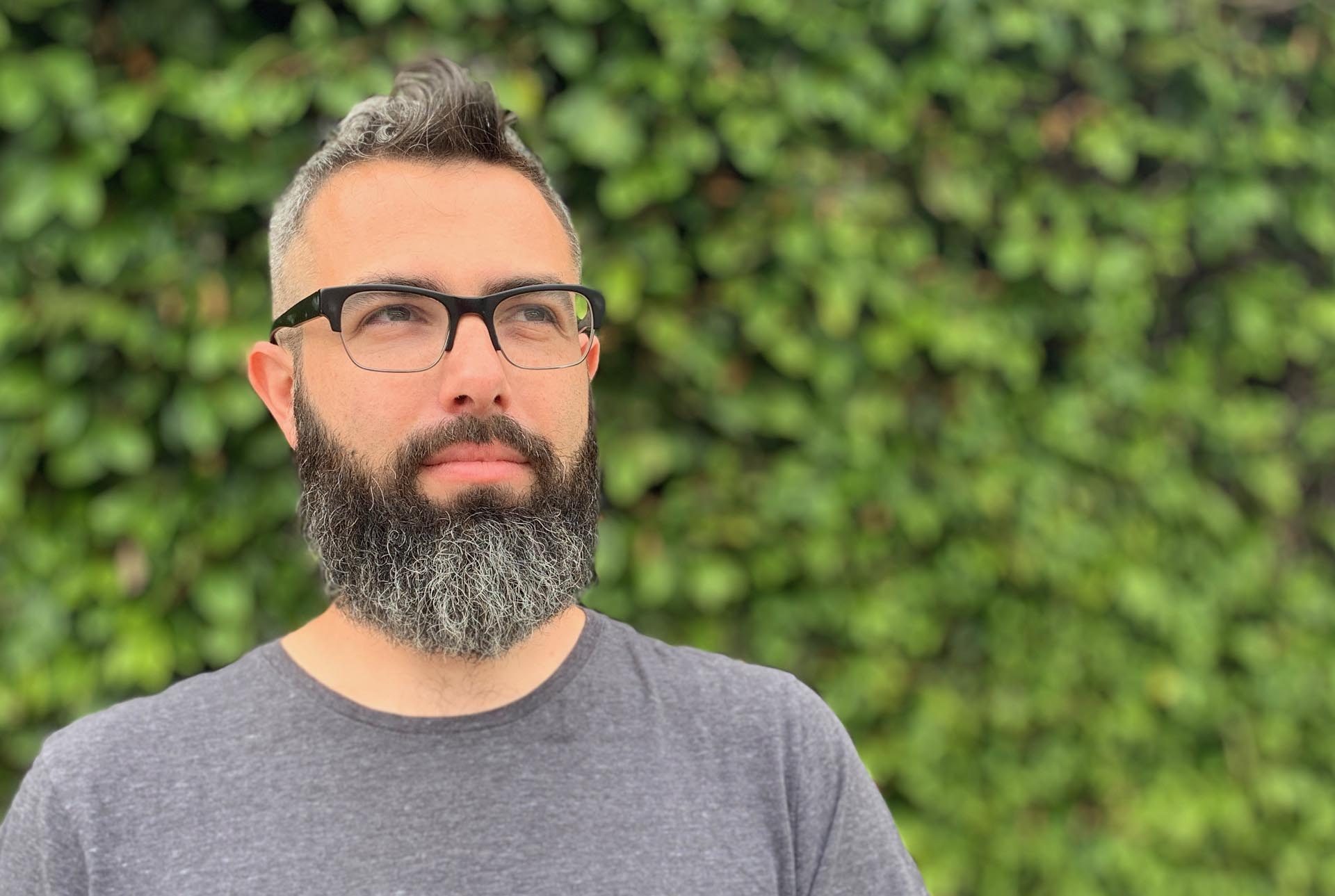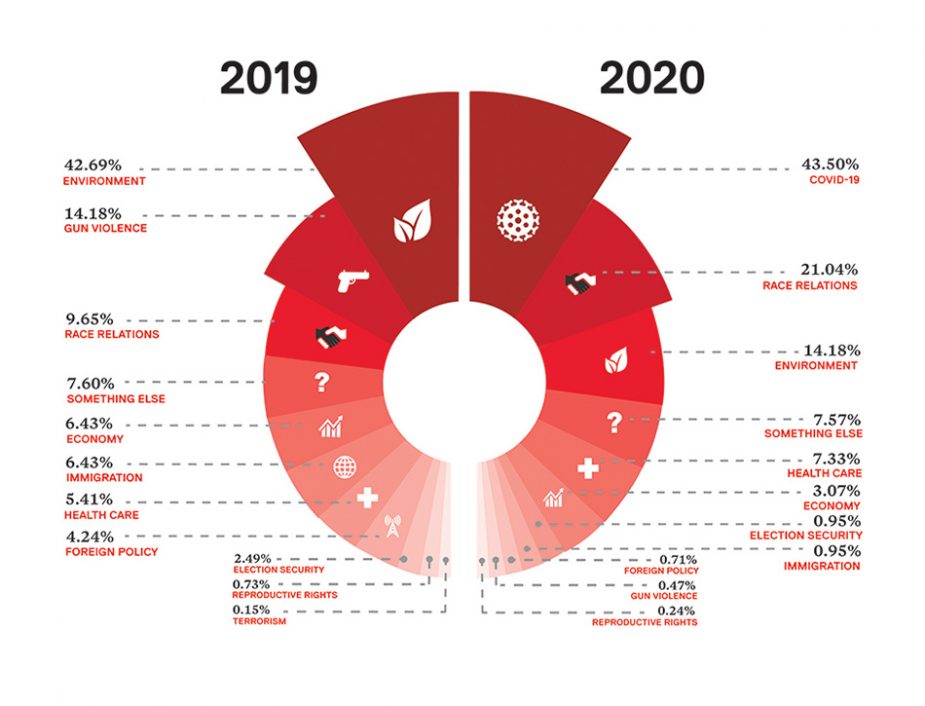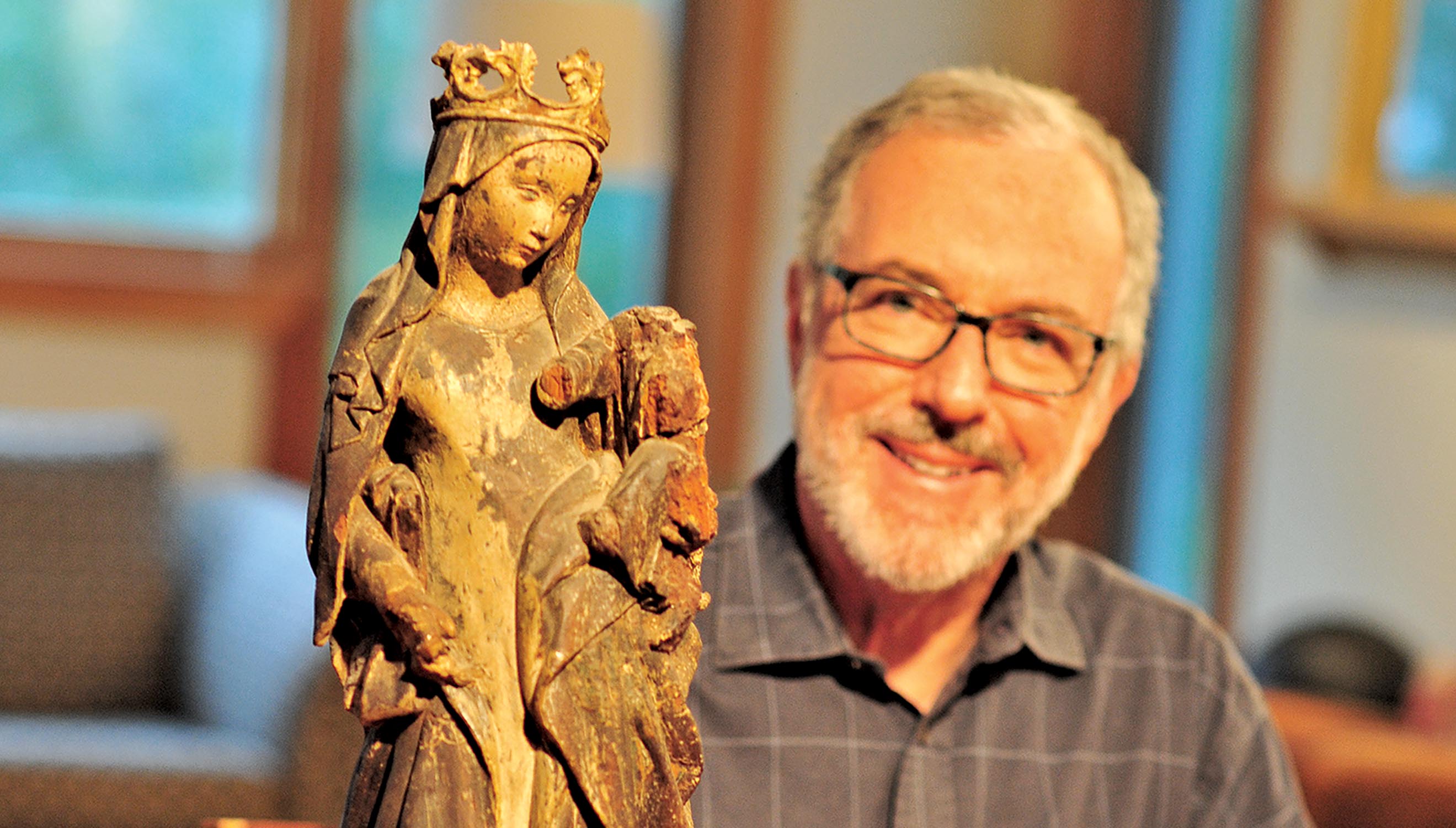Alumni in Action: Ben Sax ’07

Because Wesleyan film studies focuses on the history and analysis of the discipline—teaching how rather than what to think—graduates are well-prepared for success both inside and outside the industry. Here, we highlight film students whose off-screen accomplishments range from medicine, to real estate, to education, and even to smokejumping. Accounts and photos as provided to the editorial staff.
Ben Sax ’07
Occupation: Entrepreneur; Founder, Perceptoscope
Influential films: Get Out; Harold and Maude
After Wesleyan, I started out doing script development for Jay Roach (Meet the Parents). I then transitioned into editorial and post-production on a couple of features before finding my way to becoming a filmmaker at a new media agency called Wondros. I was helping these social causes and large organizations tell their stories and got excited to explore new mediums whose rules hadn’t yet been defined. After being exposed to the emerging field of augmented reality, I got inspired with a way to make it better and more accessible: the coin-operated binocular. I wondered what would happen if you took one and gave it some magic.
I initially built a prototype with some surplus military optics from eBay and random parts from the hardware store. Surprisingly, it worked! It helped solve some fundamental problems with the way AR functioned at that point, like heavy headsets, small fields of view, and jittery tracking. After months of iteration and refinement, I debuted my proof-of-concept prototype at an interactive arts + technology carnival, and while it was a hit, the prototype barely survived the enthusiasm of thousands of children. The idea was proven, now I needed to build it to last.
That event gave me the momentum to keep prototyping, which I did through a series of grants, residencies, and fellowships (Knight Foundation Prototype Fund, Artist-in-Residence at the SupplyFrame DesignLab, National Arts Strategies Creative Community Fellowship). Along the way, I kept up my work as a filmmaker, directing documentaries about the history of Los Angeles for public television and for an exhibition at the Natural History Museum of LA.
With Perceptoscope, I was thinking of it as both a public art initiative and a technology project—a kind of portal through time and communities. Through a research grant from the National Science Foundation, I’m now working with the Natural History Museum on Perceptoscope installations at the La Brea Tar Pits, the most active ice age fossil site in the world, smack dab in the middle of the city. We’re currently finishing up fabrication on new units as part of Phase I, with the goal of having them pop up around the Tar Pits this summer. If all goes well, I hope to expand well beyond LA.
As a film and philosophy double major, I learned to think through problems in unexpected ways. Wesleyan gave me the tools to tackle whatever I was looking at, whether or not it was something I was formally trained in. That’s especially true for the film program. It’s not a vocational program that will teach you to be a better production assistant, but rather gives you the insight to see the bigger context and tell a good story. My film theory class with Scott Higgins was one of my favorites and a good example of that. Scott always understood that cinema is a gateway to understanding. For me, film isn’t the endpoint; it’s a way of seeing how storytelling works to help human beings communicate at a level that’s closer to consciousness. It helps us share experiences in a more fundamental way. That’s part of what I’m trying to accomplish with Perceptoscope, too.


